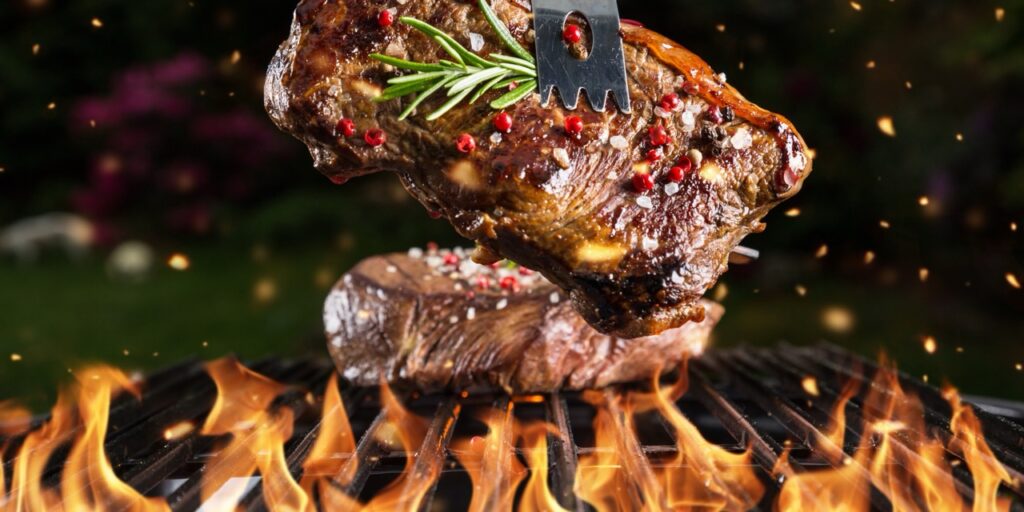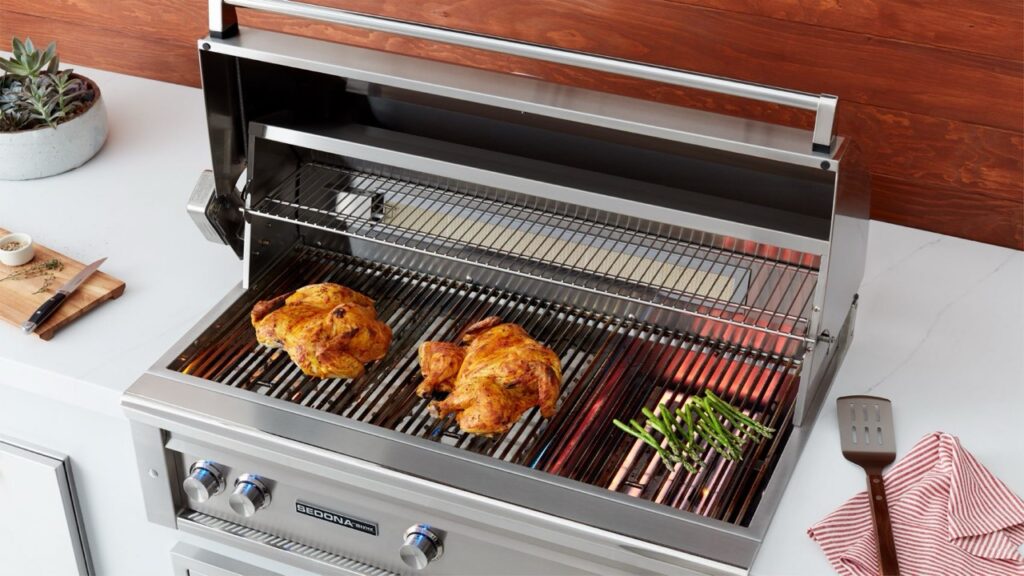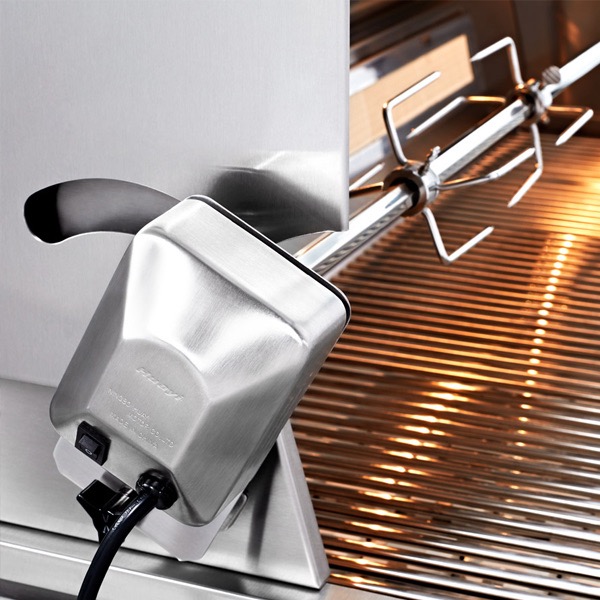Grilling is more than just cooking; it’s an art form, a way of life, and a beloved tradition in many cultures around the world. Whether you’re a seasoned grill master or a novice looking to improve your outdoor cooking skills, mastering different grilling techniques is essential. In this comprehensive guide, we’ll explore everything you need to know to become a pro at grilling, from choosing the right equipment to mastering various cooking methods.

Choosing the Right Equipment:
Before diving into grilling techniques, it’s essential to have the right equipment. From charcoal and gas grills to smokers and kamado cookers, there are various options to consider. Each type of grill offers its unique advantages, so take the time to research and choose one that suits your cooking style, budget, and preferences. Consider factors such as size, fuel type, temperature control, and additional features like side burners or rotisserie attachments.
Mastering Grilling Techniques:
1. Direct Grilling: Direct grilling is the quintessential method for cooking a wide range of foods, from juicy steaks to vibrant vegetables. This technique involves placing food directly over the heat source on the grill grates. The high, direct heat sears the exterior of the food, creating those coveted grill marks and caramelization while locking in moisture. For the best results, preheat your grill to the desired temperature, ensuring the grates are clean and well-oiled to prevent sticking. Once the grill is hot, place your food directly over the flames and cook to perfection. Direct grilling is ideal for thinner cuts of meat like burgers, sausages, chicken breasts, and fish fillets, as well as vegetables like bell peppers, zucchini, and asparagus. Remember to flip your food halfway through the cooking process to ensure even heat distribution and achieve that beautiful golden crust on both sides.

2. Indirect Grilling: Indirect grilling is a versatile technique that allows you to cook larger cuts of meat, poultry, and delicate foods that require slower, more even cooking without direct exposure to flames. To set up your grill for indirect grilling, simply ignite the burners on one side of the grill, leaving the other side unlit. Alternatively, if you’re using a charcoal grill, arrange the coals to one side and place a drip pan filled with water or your favorite liquid on the opposite side. Once the grill is preheated, place your food on the cooler side of the grill, away from the direct heat source. Close the lid to create a convection oven effect, circulating the hot air around the food for consistent cooking. Indirect grilling is perfect for roasting whole chickens, pork shoulders, racks of ribs, and even homemade pizzas. It’s also an excellent method for adding smoke flavor to your food by incorporating wood chips or chunks into the grill for a subtle, smoky taste.

3. Smoking: Smoking is a time-honored technique that imparts rich, complex flavors to meats, fish, and vegetables by slow-cooking them over low heat with the infusion of wood smoke. The key to successful smoking lies in achieving and maintaining a low and consistent temperature throughout the cooking process. While traditional smokers are specifically designed for smoking foods, you can also transform your grill into a smoker using a smoking box or packet filled with soaked wood chips or chunks. Simply place the smoking box directly over the heat source on your grill, close the lid, and allow the wood to smolder and release aromatic smoke. Adjust the grill vents to regulate the airflow and maintain the desired temperature inside the grill. Experiment with different types of wood, such as hickory, mesquite, apple, or cherry, to create unique flavor profiles that complement your favorite dishes. Smoking is perfect for brisket, ribs, pulled pork, salmon, and even cheeses and nuts, adding depth and complexity to your outdoor cooking repertoire.
4. Searing: Searing is a high-heat cooking method that creates a flavorful crust on the exterior of meats while sealing in the juices and natural flavors. While traditionally associated with indoor cooking methods like stove-top frying or broiling, searing can also be accomplished on the grill with excellent results. To achieve the perfect sear, preheat your grill to high heat, around 450 to 550°F, and ensure the grill grates are clean and well-oiled to prevent sticking. Pat your meat dry with paper towels to remove excess moisture, which can inhibit browning, and season generously with salt and pepper or your favorite dry rub. Once the grill is hot, place the meat directly over the flames and cook for a short period, typically 1 to 2 minutes per side, until a golden-brown crust forms. Avoid moving or pressing down on the meat while searing to allow the Maillard reaction to occur, resulting in that characteristic caramelization and depth of flavor. Searing is perfect for thick cuts of beef like ribeye, strip loin, and filet mignon, as well as pork chops, lamb chops, and tuna steaks, imparting a deliciously crispy exterior and tender, juicy interior.
5. Reverse Searing: Reverse searing is a culinary technique that involves slow-cooking meat at a low temperature before finishing it with a high-heat sear to achieve the perfect balance of tenderness and flavor. Unlike traditional searing, which involves searing the meat first and then cooking it through, reverse searing flips the process, starting with low and slow cooking and finishing with a quick sear. To reverse sear on the grill, set up your grill for indirect grilling by igniting the burners on one side and leaving the other side unlit, or by arranging the coals to one side of a charcoal grill. Season your meat generously with salt and pepper or your favorite dry rub, then place it on the cooler side of the grill away from the direct heat source. Close the lid and cook the meat at a low temperature, typically around 225 to 275°F, until it reaches the desired internal temperature, using a meat thermometer to monitor doneness. Once the meat is cooked through, transfer it to the hot side of the grill and sear for a few minutes on each side until a golden-brown crust forms. Reverse searing is perfect for thicker cuts of meat like prime rib, beef tenderloin, and pork loin, resulting in perfectly cooked meat with a deliciously caramelized exterior.
6. Rotisserie Grilling: Rotisserie grilling is a classic cooking technique that involves skewering meat on a spit or rotisserie rod and rotating it slowly over the heat source for even cooking and basting. This method allows the meat to cook slowly and evenly, resulting in tender, juicy, and flavorful results. Many grills come equipped with a rotisserie attachment, while standalone rotisserie cookers are also available for purchase. To use a rotisserie on your grill, secure the meat onto the spit or rotisserie rod, ensuring it’s balanced and centered to prevent uneven cooking. Place a drip pan underneath the meat to catch any drippings and prevent flare-ups. Start the rotisserie motor and adjust the heat to maintain a consistent temperature, typically around 325 to 375°F, depending on the type of meat being cooked. Rotisserie grilling is perfect for whole chickens, turkeys, roasts, and even large cuts of lamb or pork, resulting in succulent, restaurant-quality dishes with minimal effort.

Mastering the art of grilling techniques takes time, patience, and practice, but the rewards are well worth it. Whether you prefer the simplicity of direct grilling or the complexity of smoking, there’s a technique for every taste and occasion. Armed with this ultimate guide to grilling techniques, you’ll be well-equipped to impress your friends and family with delicious outdoor meals all year round. So fire up the grill, gather your favorite ingredients, and let the culinary adventure begin! Happy grilling!



